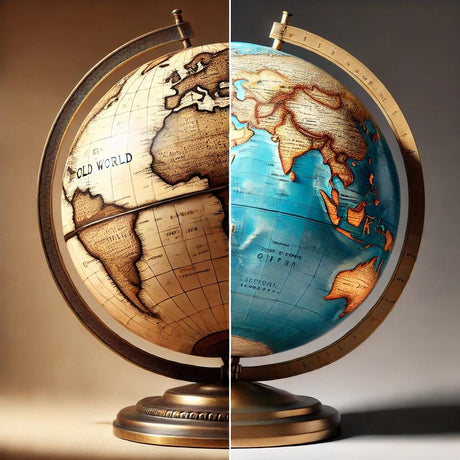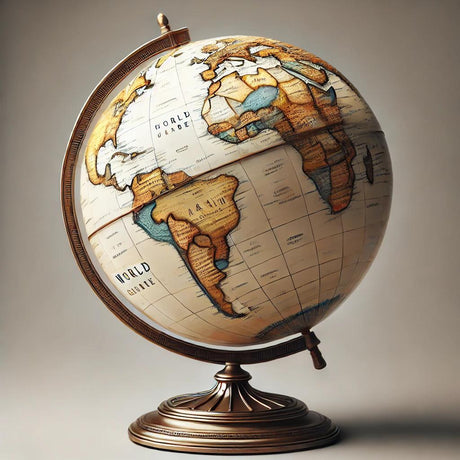 Los globos terráqueos ofrecen una representación tridimensional de la Tierra y vienen en distintos tamaños. Para elegir el globo terráqueo adecuado, es útil entender cómo se miden sus tamaños.
Los globos terráqueos ofrecen una representación tridimensional de la Tierra y vienen en distintos tamaños. Para elegir el globo terráqueo adecuado, es útil entender cómo se miden sus tamaños.
El tamaño de un globo terráqueo se determina por su diámetro (la línea recta que pasa por su centro de un borde al otro). Esta medida afecta directamente el nivel de detalle que se muestra. La circunferencia de un globo terráqueo (la distancia que lo rodea) se puede calcular con esta fórmula:Circunferencia = π × Diámetro .
Ejemplos de tamaños de globo estándar:
- Diámetro de 9 pulgadas: con una circunferencia de aproximadamente 28,3 pulgadas (9 × 3,1416), este tamaño es compacto y excelente para escritorios o espacios pequeños.
- Diámetro de 12 pulgadas: mide una circunferencia de aproximadamente 37,7 pulgadas (12 × 3,1416), este es el tamaño más común, ideal para uso educativo y general, como decorativo.
- 16 pulgadas de diámetro: con una circunferencia de 50,3 pulgadas (16 × 3,1416), este tamaño es perfecto para un estudio detallado y como pieza central en el hogar, en bibliotecas u oficinas.
- Diámetro de 24 pulgadas: con una circunferencia de 75,4 pulgadas (24 × 3,1416), este es un globo grande y de tamaño llamativo para un impacto visual significativo en una exhibición hogareña o profesional.
Al seleccionar un globo terráqueo , tenga en cuenta el propósito , el espacio y la portabilidad . Los tamaños más pequeños, como el de 9 pulgadas, son excelentes para la portabilidad o la decoración, mientras que los tamaños de 16 o 24 pulgadas brindan un mejor detalle cartográfico. Un globo terráqueo de 12 pulgadas se adapta a la mayoría de los escritorios, mientras que un globo terráqueo de 24 pulgadas necesita un espacio dedicado en el piso. Los globos terráqueos más grandes son más pesados y pueden requerir una ubicación fija.
Si comprende cómo se miden los globos terráqueos según su diámetro y circunferencia, podrá elegir el tamaño que mejor se adapte a sus necesidades. Explore nuestros tamaños de globos terráqueos estándar para obtener más información y ejemplos en Ultimate Globes .




